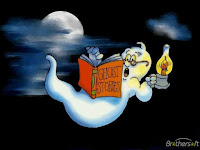Before you go see Inferno, the movie based on the Dan Brown book, starring Tom Hanks, read the book! If you've already read the book and loved it, try some of these other suggestions.
In the heart of Italy, Harvard professor of symbology Robert Langdon is drawn into a harrowing world centered on one of history’s most enduring and mysterious literary masterpieces . . . Dante’s Inferno.
Against this backdrop, Langdon battles a chilling adversary and grapples with an ingenious riddle that pulls him into a landscape of classic art, secret passageways, and futuristic science. Drawing from Dante’s dark epic poem, Langdon races to find answers and decide whom to trust . . . before the world is irrevocably altered.
READ-ALIKES:

A series of grisly murders is rocking the streets of nineteenth-century Boston. But these are no ordinary killings. Each is inspired by the hellish visions of Dante's Inferno. To end the bizarre and bloody spree, no ordinary detective will suffice. Enter the unlikely sleuths of the Dante Club: Henry Wadsworth Longfellow, Oliver Wendell Holmes, James Russell Lowell, and J. T. Fields --- renowned scholars with the skills to decipher the devilish clues. But can this band of bookish gentlemen outwit a crafty killer? A terror-stricken city --- and their own lives --- depend on it.

Dark secrets are revealed in Vatican City in this Gabriel Allon thriller from #1 New York Times bestselling author Daniel Silva.
In Munich, a Jewish scholar is assassinated. In Venice, Mossad agent and art restorer Gabriel Allon receives the news, puts down his brushes, and leaves immediately. And at the Vatican, the new pope vows to uncover the truth about the church's response to the Holocaust-while a powerful cardinal plots his next move.
Now, as Allon follows a trail of secrets and unthinkable deeds, the lives of millions are changed forever-and the life of one man becomes expendable...

The ancient order of the Knights Templar possessed untold wealth and absolute power over kings and popes . . . until the Inquisition, when they were wiped from the face of the earth, their hidden riches lost. But now two forces vying for the treasure have learned that it is not at all what they thought it was–and its true nature could change the modern world.
Cotton Malone, one-time top operative for the U.S. Justice Department, is enjoying his quiet new life as an antiquarian book dealer in Copenhagen when an unexpected call to action reawakens his hair-trigger instincts–and plunges him back into the cloak-and-dagger world he thought he’d left behind.
It begins with a violent robbery attempt on Cotton’s former supervisor, Stephanie Nelle, who’s far from home on a mission that has nothing to do with national security. Armed with vital clues to a series of centuries-old puzzles scattered across Europe, she means to crack a mystery that has tantalized scholars and fortune-hunters through the ages by finding the legendary cache of wealth and forbidden knowledge thought to have been lost forever when the order of the Knights Templar was exterminated in the fourteenth century. But she’s not alone. Competing for the historic prize–and desperate for the crucial information Stephanie possesses–is Raymond de Roquefort, a shadowy zealot with an army of assassins at his command.

An Ivy League murder, a mysterious coded manuscript, and the secrets of a Renaissance prince collide memorably in The Rule of Four—a brilliant work of fiction that weaves together suspense and scholarship, high art and unimaginable treachery.
It's Easter at Princeton. Seniors are scrambling to finish their theses. And two students, Tom Sullivan and Paul Harris, are a hair's breadth from solving the mysteries of the Hypnerotomachia Poliphili—a renowned text attributed to an Italian nobleman, a work that has baffled scholars since its publication in 1499. For Tom, their research has been a link to his family's past—and an obstacle to the woman he loves. For Paul, it has become an obsession, the very reason for living. But as their deadline looms, research has stalled—until a long-lost diary surfaces with a vital clue. And when a fellow researcher is murdered just hours later, Tom and Paul realize that they are not the first to glimpse the Hypnerotomachia's secrets.
Suddenly the stakes are raised, and as the two friends sift through the codes and riddles at the heart of the text, they are beginnning to see the manuscript in a new light—not simply as a story of faith, eroticism and pedantry, but as a bizarre, coded mathematical maze. And as they come closer and closer to deciphering the final puzzle of a book that has shattered careers, friendships and families, they know that their own lives are in mortal danger. Because at least one person has been killed for knowing too much. And they know even more.
From the streets of fifteenth-century Rome to the rarified realm of the Ivy League, from a shocking 500 year-old murder scene to the drama of a young man's coming of age, The Rule of Fourtakes us on an entertaining, illuminating tour of history—as it builds to a pinnacle of nearly unbearable suspense.
























